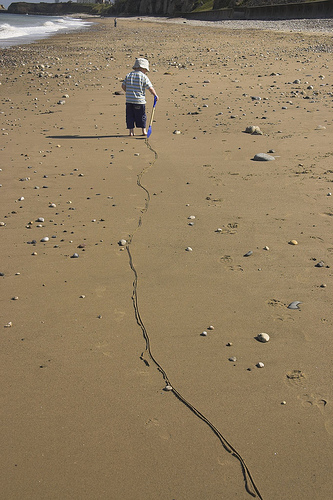
Over the past few weeks, you’d have been forgiven for wondering if the name of this blog should be “Plagiarism Watch” instead of Retraction Watch. Just take a look at all of the recent plagiarism cases:
- The group that hit for the misconduct cycle, in which plagiarism might be considered the least of their offenses
- The case of the “plagiarist [who] plagiarizes from an author who herself has plagiarized“
- Another set of authors who plagiarized in at least one paper, now retracted, and probably more
That last example inspired this poll. When we brought an example of likely plagiarism by the same author to the attention of one journal editor, he was nonplussed. “[A]s all editors know there are rarely absolutely clear cut issues in which the line is unequivocally drawn in the sand,” said the editor-in-chief of Biomaterials, David Williams of Wake Forest. (Williams also suggested that the relative obscurity of the plagiarizers’ institution, and of the journal where they published, meant the case wasn’t worth investigating.)
So where is that line in the sand? Take our poll:
It really depends on the context. “Plagiarism” in the methods section is less of a big deal than in the discussion. Even in the intro, there are some cases where some self-plagiarism might be merited. There are only so many ways to describe the literature, and if you’ve written a dozen or more papers on a topic, there might be some justified repetition.
I guess it depends on what you mean by ‘sanctions’: if you’re talking about retraction of a published paper, I’d put the bar higher than for a published correction; if you’re talking about rejecting/requiring revisions at the pre-publication stage, then no tolerance at all.
I voted for “any at all” with the understanding that a methods paragraph that copies a few sentences from another paper and then cites that paper is the same as a quote. It makes me worry that the authors don’t understand the method, since they didn’t rewrite it, but that’s not an ethical issue.
In the world of any other writing, even a few sentences copied without attribution is not okay. Science writing is just more writing, and shouldn’t be treated with more leniency.
Surely is depends on the importance and novelty of what is plagiarized rather than the number of words? I agree that science writing is not a special case to treated more leniently than other writing. There is also a general (unfounded) notion that scientific fraud is not against the law. If it fits common fraud then it is common fraud (deception in order to gain advantage).
In most cases plagiarizing text a swift apology and retraction might put things right. Again this is not a plea for leniency, but rather a criticism of the drawn out “commissions” which take too long, and as a result leave innocent bystanders damaged.
It is normal scientific practice to read and criticize scientific publications every day. If something doesn’t fit people should be free to say so. Science should be about discourse not about stonewalling and using petty bourgeois rules of politeness to stop people pointing out the obvious.
tHERE IS NO REASON TO COPY ANYTHING WITHOUT ATTRIBUTION, NOT EVEN METHODS. E.G.wE used the method of x & y(ref) with minor modifications as follows.
If one wants to quote a whole paragraph, quotation marks are available.
If one wants to quote oneself, its betternot to write the paper at all until one has something new to say.
EBNewman
I can see no reason for not putting copied material on quotation marks and referencing it.
I completely agree with you, on all aspects. And I stand by my opinion that how these “copy and paste” episodes are handled (retraction or simple corrigendum) depends too much on who is the guilty fellow.
Here’s the thing though. Let’s say that in a paper this year, I write “We used the method of X and Y with minor modifications as follows.” Next year, I publish another paper, using the same method with the same modifications on different samples. Why should I have to find some weird circumlocutory way of saying the same thing that doesn’t overlap sufficiently to count as plagiarism? How much do I have to change it before it counts as plagiarism in your eyes?
If you prefer another example from Introduction rather than Methods, consider this. My subject is the sex chromosomes and their role in spermatogenesis. Over time, due to the unique evolutionary pressures acting on them [refs], both the X and Y chromosome have become enriched for genes important in regulating spermatogenesis [refs]. The previous sentence is (with minor modifications), one I have had to use several times to set the scene when leading in to the particular question I’m investigating. Thus far, I believe I’ve managed to make each version of the sentence distinguishable. I’m less certain that I’ll still be able to do so in 40 years’ time, assuming I publish a couple of papers a year. How many ways *are* there to skin a given cat?
For that reason, I would say that occasional repeated or nearly repeated sentences are OK in the Introduction and Methods. Perhaps even in the Discussion too – take for example sentences such as “These data are consistent with our prior work on {related model} which showed {interesting thing}.” There are only so many ways you can sum up {interesting thing} in a sentence!
Results of course should be novel, or what’s the point of publishing them?
Hey we are talking not about one single sentence eventually partially modified and referenced. We are talking about entire paragraphs stolen from others.
You may be talking about paragraphs. The people who ticked the poll box for “any at all” clearly were not talking about paragraphs, otherwise they’d have ticked that option!
Being a new graduate student, I am wondering to whom does one report plagiarism in a journal – the editor??